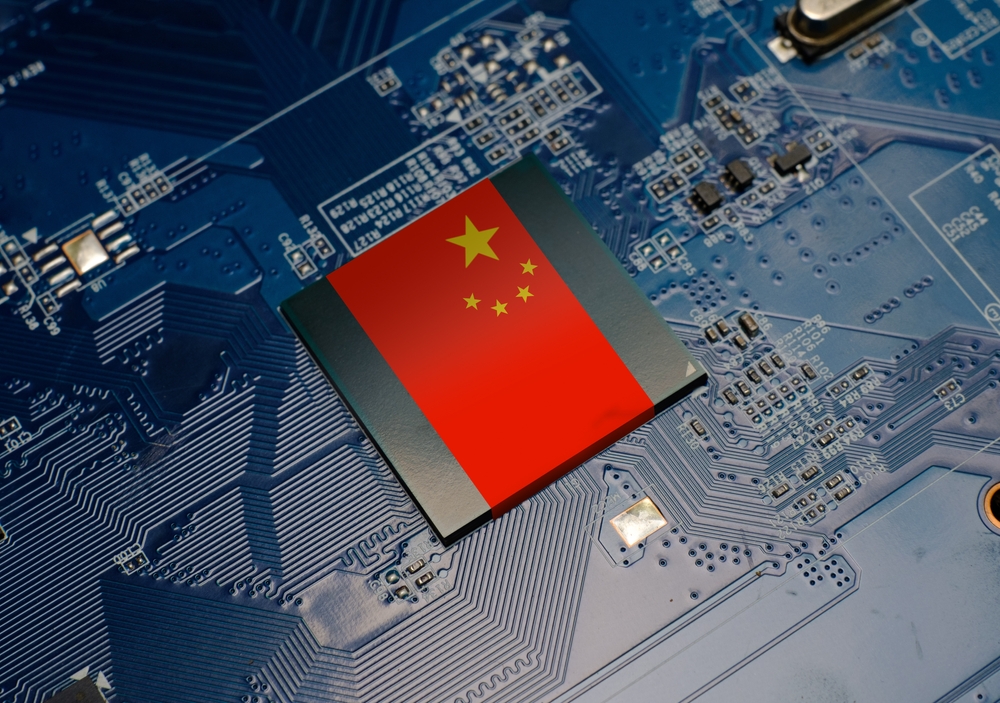China only produces 1% of critical litho chipmaking tools, exposing it to harsh US sanctions — investment in domestic toolmakers looks to reverse the trend
China needs Western tools to make advanced semiconductors.

China wants to dominate global chip manufacturing, but its ambitions are dashed by the hard reality of its low domestic production rates. According to a graph from a Nikkei report, China's domestic chipmaking tool manufacturers produce 20% of the tools the country uses for chipmaking, but it currently only has a production rate of 1% of the critically important lithography tools. This means the East Asian country needs to invest much more in its domestic chipmaking tool firms before it can be self-sufficient in meeting its chipmaking needs.
Those on the ground (semiconductor manufacturing companies and equipment manufacturers) are at their wits' end, but it's difficult for them to say so," says Yuji Miura in the Nikkei report. Miura is a senior researcher at the Japan Research Institute.
According to the data Nikkei compiled using data from Japan’s Ministry of Economy, Trade, and Industry, the China Institute of Commerce and Industry, the Semiconductor Industry Association, and the Boston Consulting Group, China’s domestic production rate of chipmaking tools is around 20%, with the critical exposure and development tools (i.e., photolithography) comprising less than 1%. Expanding the tweet below shows the machine-translated version of the compiled data.
厳しい中国の半導体国産化、製造装置のほとんどが自給率2割以下 https://t.co/VDCUSMG7RBJune 11, 2024
These numbers show how China’s semiconductor industry is at the mercy of external forces. With the U.S. making moves to block China’s access to advanced technologies, Beijing will likely miss its targets by years, if not decades. Some of America’s moves include banning ASML from servicing some of its high-end chipmaking tools in China, meaning advanced chip production in the country could grind to a halt.
Even so, Chinese President Xi Jinping says that China doesn’t need ASML to develop its own technologies. Beijing is pouring billions of dollars into developing its domestic semiconductor industry, with firms like Naura Technology and AMEC investing in lithography tools to help China break free of its reliance on ASML.
However, despite the bans, sanctions, and tariffs that the U.S. is placing on China, the latter has continued to steadily build up its domestic semiconductor industry. China’s Zhaoxin released its domestic KX-7000 CPU in March 2024. While it’s only as powerful as Intel and AMD chips from 2018, the KX-7000 doubled the performance of its KX-6000 predecessor. Huawei has also found a way to circumvent America’s ban on its access from 12th-Gen Intel CPUs by introducing its own Kirin 9000C processor.
Another way that China could sidestep the West’s sanctions is to innovate on older yet mature nodes. An example of this is when Huawei mass-produced 7nm chips without EUV tech—something that surprised many major global semiconductor players. Chinese firms could also concentrate on open standard technologies that some may overlook, like RISC-V. As open standards are accessible and useable to anyone and everyone, the U.S. will have difficulty legally stopping Chinese firms from using the technology.
Get Tom's Hardware's best news and in-depth reviews, straight to your inbox.
In the meantime, Beijing needs to keep pouring money and talent into its chip production capabilities to keep up with the West. Unless it could miraculously stop U.S. sanctions or build up its domestic chipmaking capabilities overnight, Beijing’s global chip dominance would likely remain a pipe dream.

Jowi Morales is a tech enthusiast with years of experience working in the industry. He’s been writing with several tech publications since 2021, where he’s been interested in tech hardware and consumer electronics.
-
peachpuff ReplyBeijing needs to keep pouring money and talent into its chip production capabilities to keep up with the West.
Don't forget about ip theft, they need to up those numbers too. -
Reply
Article :
"Chinese firms could also concentrate on open standard technologies that some may overlook, like RISC-V. As open standards are accessible and useable to anyone and everyone, the U.S. will have difficulty legally stopping Chinese firms from using the technology."
Bah ! It could be misleading to say it as an open source standard per se. More like the tech's usage or implementation could be labelled as open-source, meant to be adopted by others. -
terell I seriously wish the quality of reporting on semiconductors in China was better. It's our geopolitical rival and quality of information is atrocious.Reply
Let's take the KX-7000 CPU mentioned in the article. That is x86 compatible CPU allegedly rivaling Ryzen 5 2500X (6 years old now). The source? Leaked Geekbench scores. Not actual test by someone reputable, just something leaked online of dubious quality.
This article is similar. It basically says: China has no public in DUVi litography (much less EUV), hence 1%. There are two companies that do DUVi: Nikon and ASML. ASML has 95%+ percent of the market and Nikon used to have Intel that ditched them, so the future is uncertain.
And that's true. China has SMEE, a completely neglected state run company that had utter garbage product. Until trade was and suddenly it gets high priority. So far, no public product, though it likely is used in testing runs in SMIC, CXMT and YMTC. SMEE allegedly build test machines in 2023 and were tested in 2024. Is it true? Who knows. They had EUV lab machine for research in 2016... any progress?
Instead of some reasonable article describing current state, we get 1% in litho in domestic share (which is the SMEE, as seen in the tweet)... Hurray? China doesn't care about DUVi machines in short term. They have bought everything they could from ASML to last them years.
Reuters: Chinese chip equipment makers grab market share as US tightens curbs
> Nearly half, or 47.25%, of all machinery equipment tenders by Chinese foundries from January to August 2023 were won by local manufacturers.
> From July to August 2023, 62% were won by Chinese suppliers compared to only 36.3% from March to April, the brokerage's analysts said. -
nookoool Replypeachpuff said:Don't forget about ip theft, they need to up those numbers too.
Every US startup tech company I worked for poach tech from it's older rival.